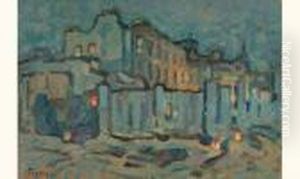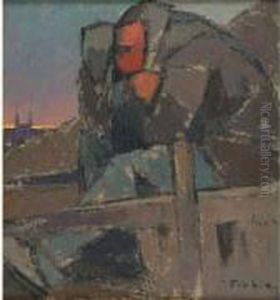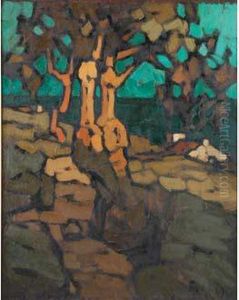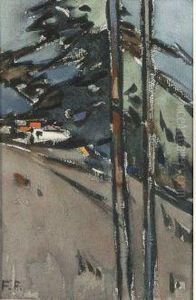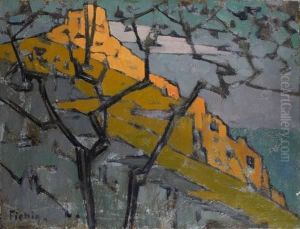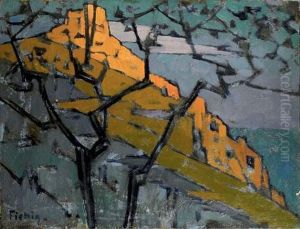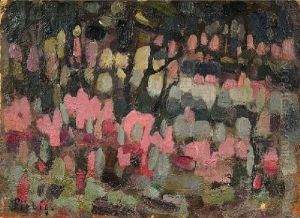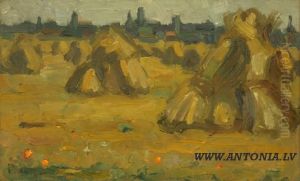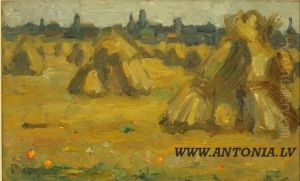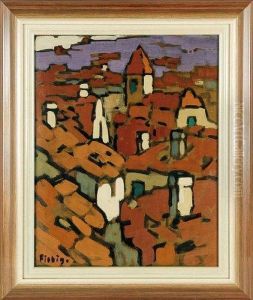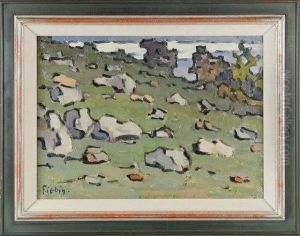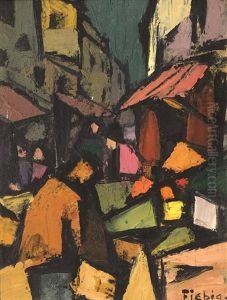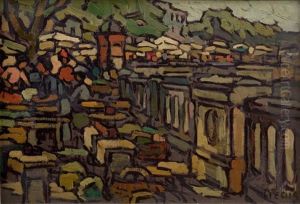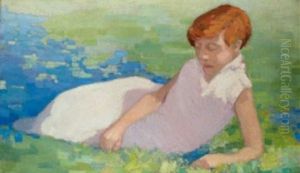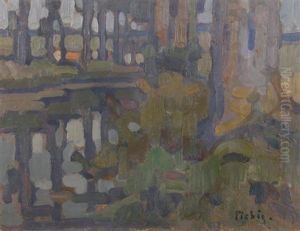Frederic Fiebig Paintings
Frederic Fiebig was a painter of German origin who spent a significant part of his artistic career in Ceylon (now Sri Lanka) and India. Born in 1885 in Latvia, which was part of the Russian Empire at the time, Fiebig moved to Ceylon around 1908. His early life before his arrival in Ceylon is shrouded in mystery, and little is known about his formal art education or what precisely drew him to the Indian subcontinent. However, his work from this period suggests a deep engagement with the landscapes and people of his adopted home.
Fiebig was primarily known for his vibrant watercolors and sketches that captured the essence of daily life, landscapes, and architectural heritage of South Asia during the early 20th century. His work is characterized by a bold use of color and a dynamic representation of light and shadow, which brought to life the bustling streets of Ceylon, the serene landscapes of India, and the diverse characters that inhabited these spaces. Despite his European origins, Fiebig developed a style that was deeply influenced by the visual culture of South Asia, blending European techniques with local aesthetics to create a unique body of work.
Throughout his career, Fiebig traveled extensively across India, capturing the country's vast diversity through his art. He documented historic events, cultural practices, and the everyday life of people from various strata of society, making his work an invaluable record of the time. His paintings and sketches provide a visual history of British India and Ceylon, offering insights into the colonial era's socio-cultural dynamics.
Fiebig's contribution to the art world, however, remained largely unrecognized during his lifetime, and it was only posthumously that his work began to receive the attention it deserves. Today, Frederic Fiebig's paintings are considered significant for their historical value as well as their artistic merit. They can be found in private collections and museums across the world, serving as a testament to his talent and his unique perspective on a transformative period in South Asian history.
He passed away in 1953, leaving behind a rich legacy of artwork that continues to be studied and admired by art historians and enthusiasts alike. Despite the relative obscurity of his name in mainstream art history, Frederic Fiebig's work remains a fascinating window into the life and times of early 20th century South Asia, bridging cultures and capturing the essence of a world in transition.
